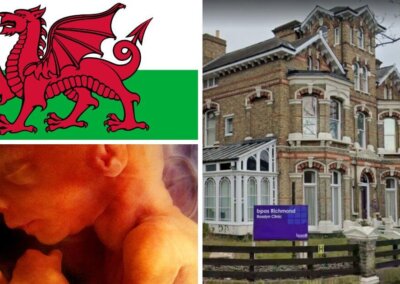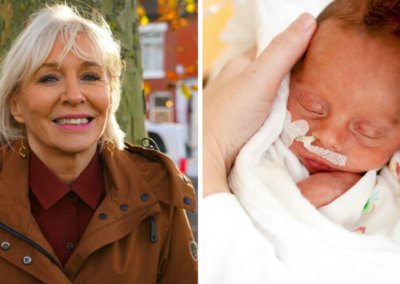A woman who undergoes an abortion at 20 weeks or over in Australia may be eligible to receive payments of over $22,750 of taxpayers’ money meant for parents who experience a stillbirth.
Services Australia, which “deliver[s] government payments and services”, explains that, in cases of a stillbirth, parents may be eligible for a Stillborn Baby Payment, which consists of a lump sum of $4,326.57, or Parental Leave Pay, which can amount to a total of $22,754.40 paid over a 24-week period.
The Government defines a stillborn baby as “one who had not breathed since delivery and had no heartbeat after birth”, and “also had to have a gestation period of at least 20 weeks or weighed at least 400 grams at their birth”.
According to a letter written on behalf of the Minister for Government Services, Katy Gallagher, the eligibility criteria for the Stillborn Baby Payment “do not exclude circumstances where the stillbirth was due to a medical termination, including an intentional abortion”.
This is not the first time in recent years that the Australian government has been accused of offering large sums of money to women after having had a late-term abortion. In 2013, South Australia Health published guidance which reportedly advised women that they could claim thousands of dollars for having an abortion after 20 weeks gestation.
Abortion up to birth
Abortion is allowed up to birth in all states of Australia.
State laws in Australia allow for abortion right through to birth on physical, psychological and social grounds when approved by two doctors; this can be the abortion operating surgeon and anaesthetist.
This has, in practice, allowed for de facto abortion on demand, for any reason, right through to birth in Australia.
Victoria was the first state to change their law to allow de -facto abortion on demand up to birth. Ahead of the legislation being introduced in Victoria in 2008, abortion activists claimed that, although abortion would, in practice, be allowed for any reason, doctors would ensure that the vast majority of abortions would occur only in rare circumstances, such as when a baby had a condition where they would either die in the womb or shortly after birth (a fatal fetal abnormality or life-limiting disability).
Data from the operation of the law in Victoria shows that this has not been the case. Right To Life UK’s Public Affairs team undertook an extensive analysis of published abortion data on late-term abortions in Victoria from The Consultative Council on Obstetric and Paediatric Mortality.
This data shows that between 2008, when the law changed, and 2020, 1,418 late-term abortions (between 20 weeks gestation and birth) were performed, allowed by doctors for ‘psychosocial’ reasons – these were abortions where the baby did not have a disability and the abortion was performed on social grounds. In 2011, one of these abortions on social grounds occurred at 37 weeks.
In South Australia, the only jurisdiction whose laws require it to regularly collect and publish data on abortion, in 2023, almost 80% of late-term abortions performed at 23 weeks gestation or over were carried out due to the mental or physical health of the mother, with no late-term abortions being carried out to save the life of the mother.
Midwives and nurses distressed after having to pay mothers following abortions
According to Dr Joanna Howe, a Professor of Law at the University of Adelaide, these developments mean that “Parents who deliberately kill their healthy, viable child can choose between a Stillbirth Parenting Payment of [$4,327] or a Paid Parental Leave Payment of [$22,754]”.
In December last year, the pro-abortion organisation South Australian Abortion Action Coalition (SAAAC) said it supported the Stillborn Baby Payment. A SAAAC spokesperson said “[It] treats abortion care as healthcare and recognises the complex impacts on patients who need to access a termination of pregnancy after 20 weeks”.
Howe said she became aware of this loophole after a hospital administrator raised concerns about this “increasing problem”.
Following this insider knowledge, Howe has spoken to several midwives and nurses who have told her of being distressed at having to sign forms to give these payments to women following abortions.
“One midwife was in tears over the phone telling me of a mother who had aborted her healthy 28-week-old baby and was intending to use the payment for a holiday in Bali”, she said.
“It is a slap in the face to parents who suffer the terrible grief of unexpectedly losing their child to a stillbirth”.
Loophole leaves the door open for coercive abortions
According to the letter written on behalf of the Minister for Government Services, these payments do not have to be made directly to the stillborn baby’s mother. They can, instead, be made to the mother’s partner. This “opens the door to abuses of the payment”, Howe said.
She pointed out that this could include men who coerce their partner into having an abortion, saying “A woman who has an intentional abortion – or even a man who forces a woman to have an intentional abortion – the Labor government will pay them [$4,326.57]”.
This could be a major problem “if you are in an abusive relationship or a coercive relationship”, according to Howe. “We certainly know that reproductive coercion is a major issue in the abortion space”, she said.
Howe cites a study from Queensland to support her claim, which highlighted that 43% of women who had contacted an abortion provider had been exposed to violence, including violence from their partner or reproductive coercion.
Spokesperson for Right To Life UK, Catherine Robinson, said “This loophole in the eligibility criteria for such payments, allowing those who have late-term abortions to receive thousands of dollars, is dangerous and urgently needs to be closed. It may incentivise even more people to have late-term abortions, and could even increase the prevalence of reproductive coercion”.












